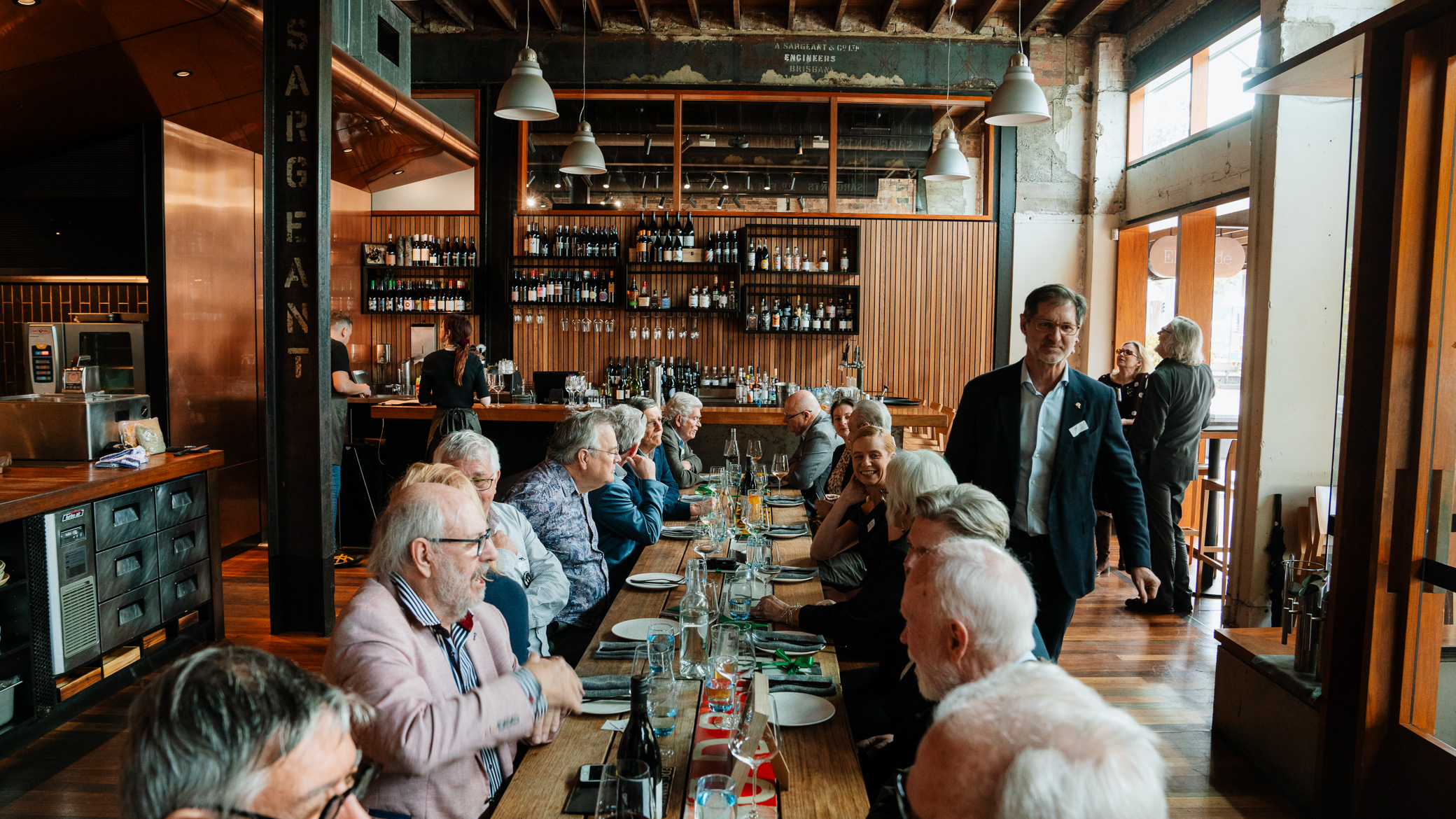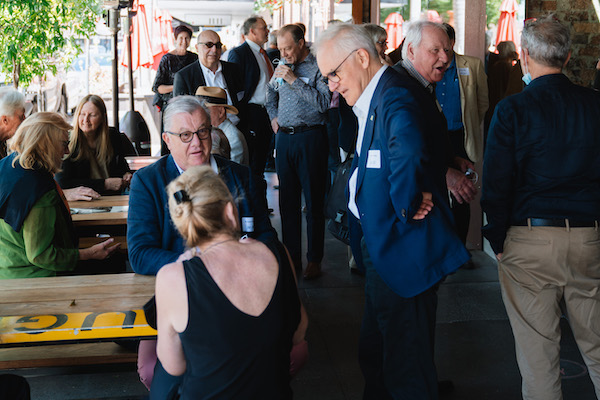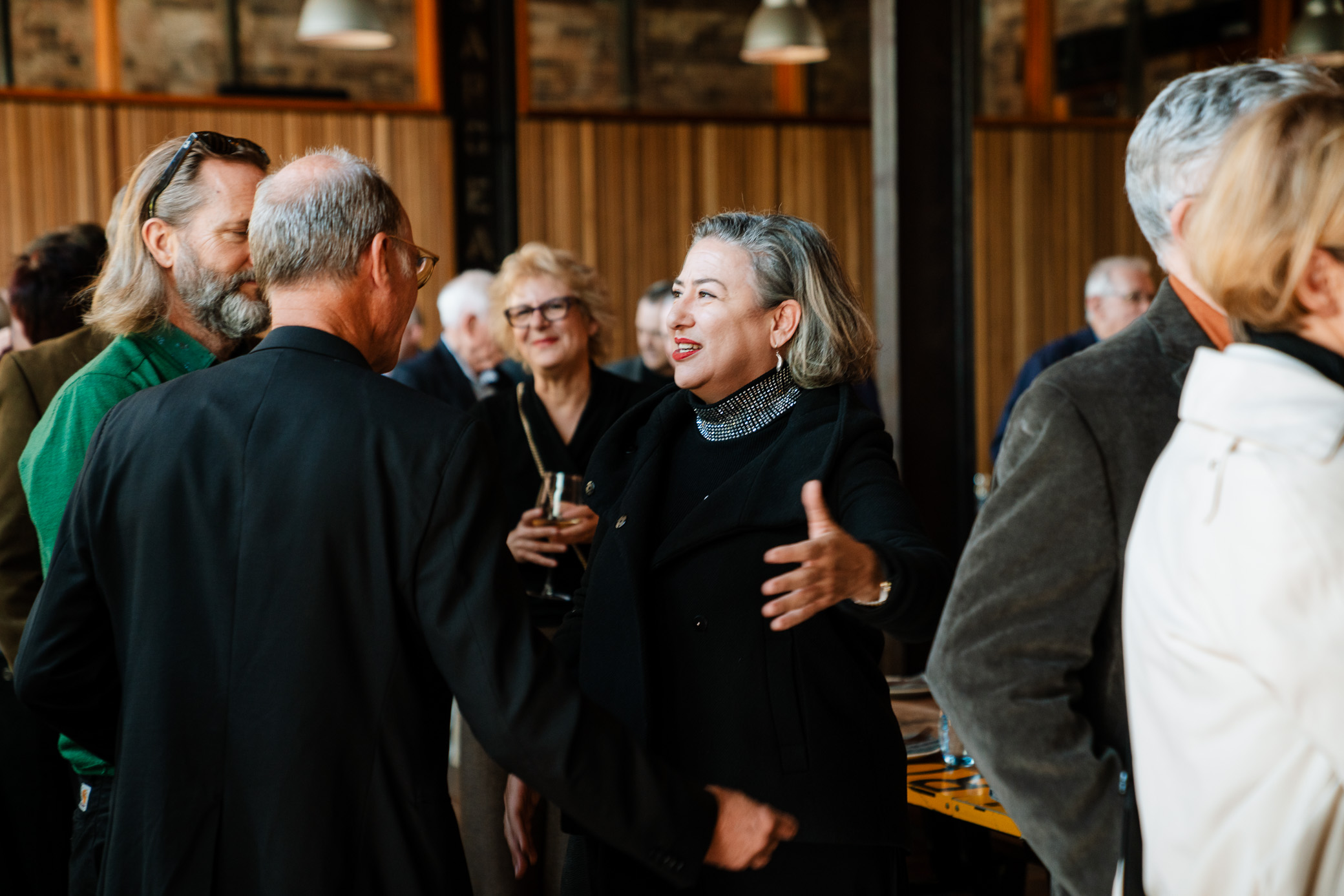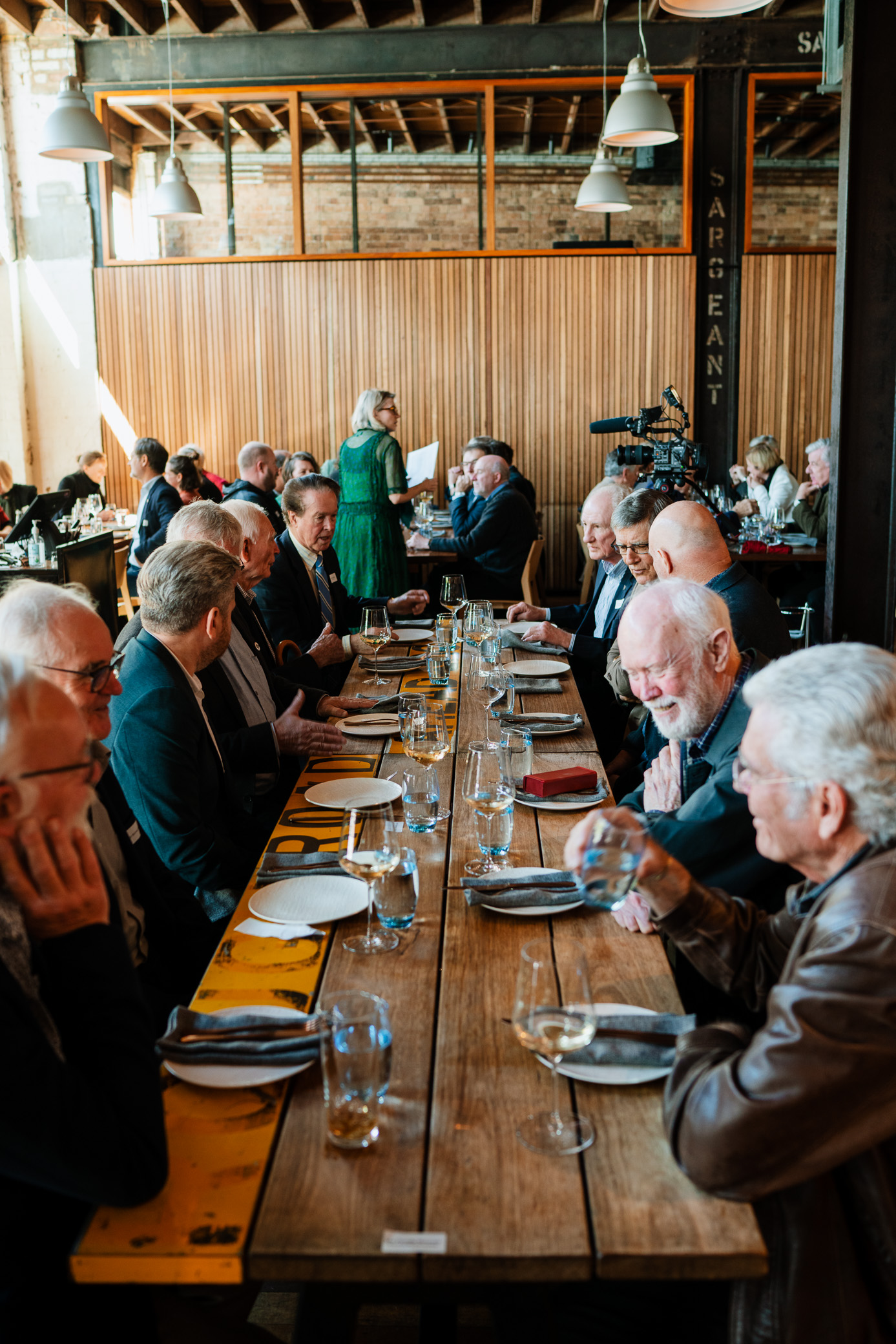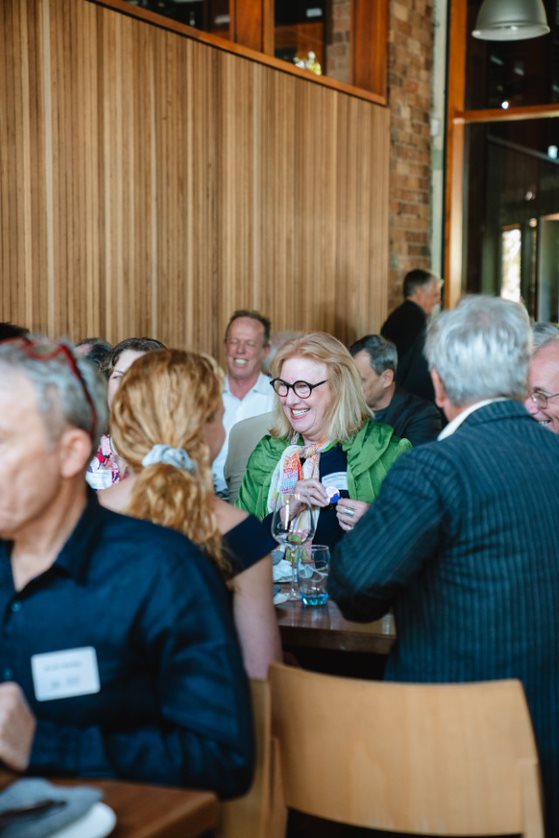Queensland
Fellows &
Life Fellows
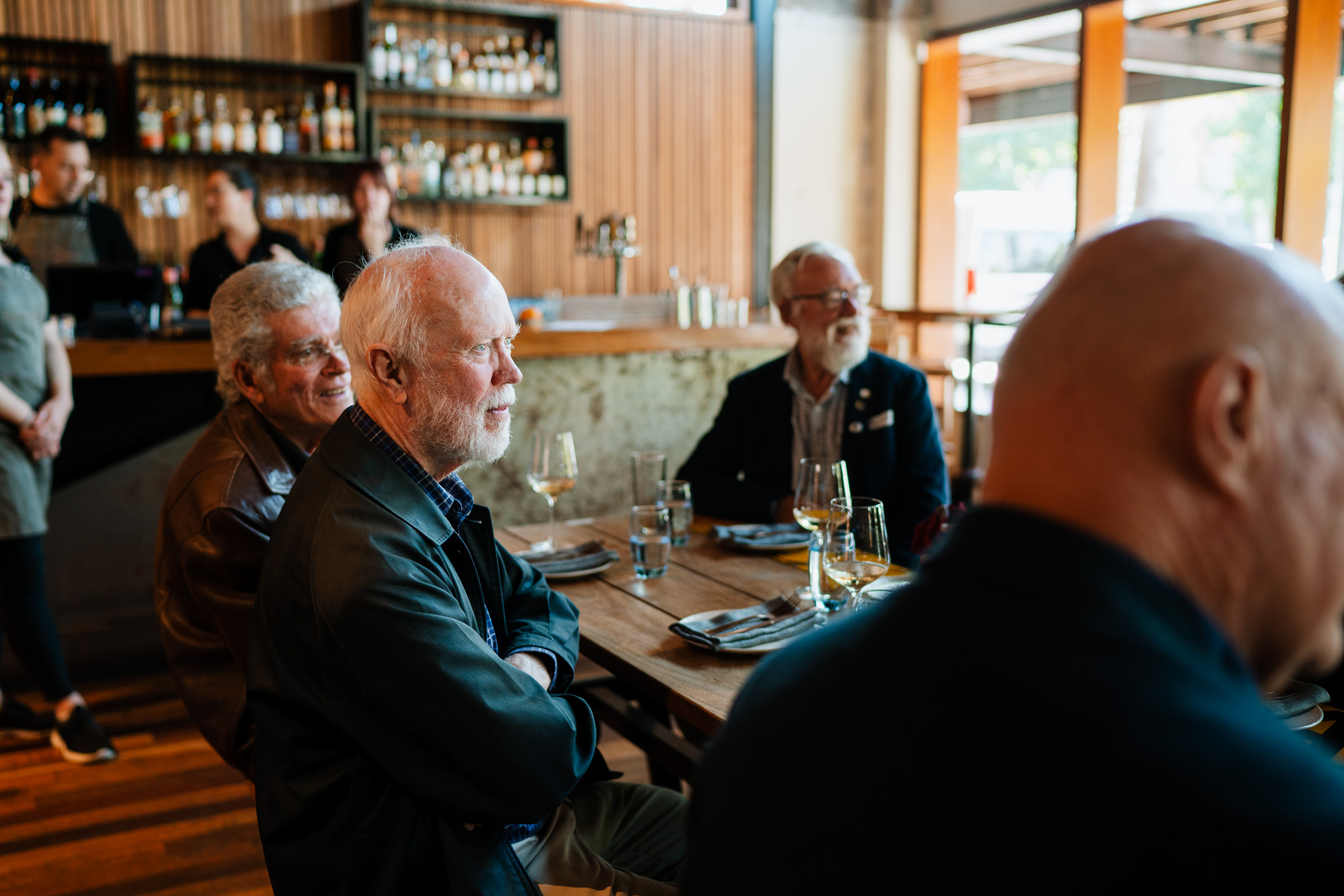
Honours
Life Fellows & Fellows
Life Fellowship is awarded to members who is a Fellow of the Institute and who, in the opinion of the National Council, has rendered notable contribution to the advancement of the profession in design, construction, literature, education, public service or in any other way deemed worthy of the honour of Life Fellowship. Life Fellow is the highest honour class of RAIA membership available to members practising architecture.
Fellowship is awarded to those who have demonstrated a significant contribution to the architecture profession beyond architecture practice. Each nomination requires the endorsement of two voting members and the Chapter Council.
Videography and photography by Flynn Graham, Wildkinds Studio
On this page
2024 Life Fellows

Michael Lavery
Dr Michael Lavery’s lasting and substantial contribution to the profession through service to the Royal Australian Institute of Architects is crowned by many built works indelibly enhancing the public domain, with Queensland Outback projects reviving the professional’s significance in regional Queensland.
Michael has served RAIA committees and awards juries with preeminence. He was Queensland Awards Director in 2016 and Deputy Director in 2015. From 2020 to 2022, Michael served as Queensland Chapter President with distinction and poise, during the challenging Covid era when not-for-profit organisations faced substantial threats, steering the Chapter through this tumultuous period to become one of the most appreciated Chapter Presidents in living memory. Michael’s ambition to augment architects’ visibility led to his legacy projects: introducing permanent building plaques for architectural awards and hard-copies of Architecture Australia distributed throughout Queensland’s public libraries.
Michael has served on industry advisory boards to Queensland universities, been a guest lecturer and critic at those universities, sat on public urban design panels and presented at conferences and public forums around Australia and New Zealand.
Michael is one of the founding directors of m3architecture, a practice specialising in public architecture with expertise in educational buildings, winning several National RAIA awards, many State RAIA awards and two Queensland Chapter RAIA Regional Building of the Year awards, also being awarded by allied institutions for projects ranging from urban design scale to interiors projects.
Dr Michael Lavery is a most deserving and worthy recipient of a Life Fellowship of the Australian Institute of Architects.
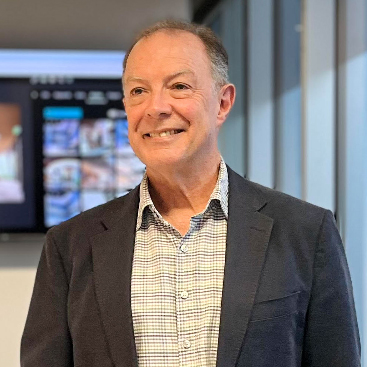
Geoffrey Street
Geoffrey Street has delivered many years of exemplary service to the architectural profession and to the community. Geoff commenced his professional life working for Myer Property prior to establishing Anderson Street Architects (founded 1985 with Peter Anderson), a successful practice across the retail, hospitality and industrial building sectors. That practice started working with Suters Architects in 1996, before formally merging in 2001, with Geoff becoming a Director of the larger practice. This extended Geoff’s breadth of projects to include educational and health projects. Over the years, Geoff contributed to many merger and acquisition opportunities to expand the geographical and sector coverage of the business. Most recently Suters Architects rebranded to ARCH and Geoff continues to consult and mentor young architects.
Geoff has had a long and active membership of the RAIA, serving on several Queensland Chapter committees, as Chair of a market expansion taskforce, and as a juror in the RAIA awards system on a number of occasions. His service to the Association of Consulting Architects has also been long and praiseworthy. Geoff was an ACA committee member for ten years and served as Queensland/NT President from 2012 to 2014.
In addition to his extensive service to the profession, Geoff has given exceptional service to the community through his involvement in the Rotary Club of Fortitude Valley since 1985, serving as President in 1997.
Geoffrey Street’s leadership roles in business, in professional associations and in community organisations places him as a worthy recipient of the Life Fellowship of the Australian Institute of Architects.
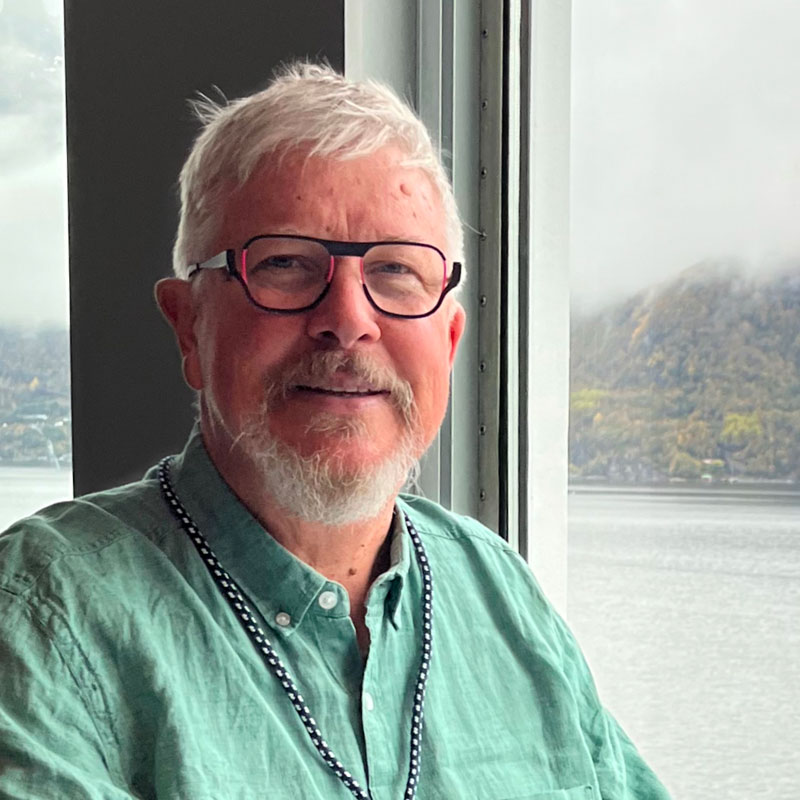
Leigh Shutter
Leigh Shutter, a renowned and respected Queensland architect, has made significant contributions in architectural practice and education and in service to the Australian Institute of Architects. His integration of practice and teaching has provided exceptional learning for decades of students. Shutter’s foundational years were spent working on Parliament House in Canberra and completing a Masters in Architecture from New York’s Columbia University. Shutter founded Planet Design, an award-winning design-led practice.
In 2001, he entered Academia, firstly QUT, followed by a distinguished career at Griffith University Architecture School. There he facilitated strong connections, whilst in various, roles with several Asian universities across more than a decade, including his appointment as co-founding chair of AVAN, Asian Vernacular Architecture Network. Shutter’s legacy to local and international cohorts of students is evidenced by his convening and curating countless study tours, studios, exhibitions, authoring multifarious publications and by his Visiting Professorial Fellow status from Tongi University, Shanghai.
Leigh served with distinction on Queensland Chapter Council and education committees including six years as Education committee Chair and as a National Education committee member. He has served as a panel member on AACA accreditation, Board of Architects examiner and overseas qualification assessor and on the Bond University Industry Advisory Panel.
Throughout Shutter’s career, he has demonstrated a deep commitment to excellence in the practice and teaching of architecture. His academic enquiry into the nexus between place, heritage and people has sought new pathways to enhanced urban futures while preserving urban identity.
Leigh Shutter is a worthy recipient of an RAIA Life Fellowship.
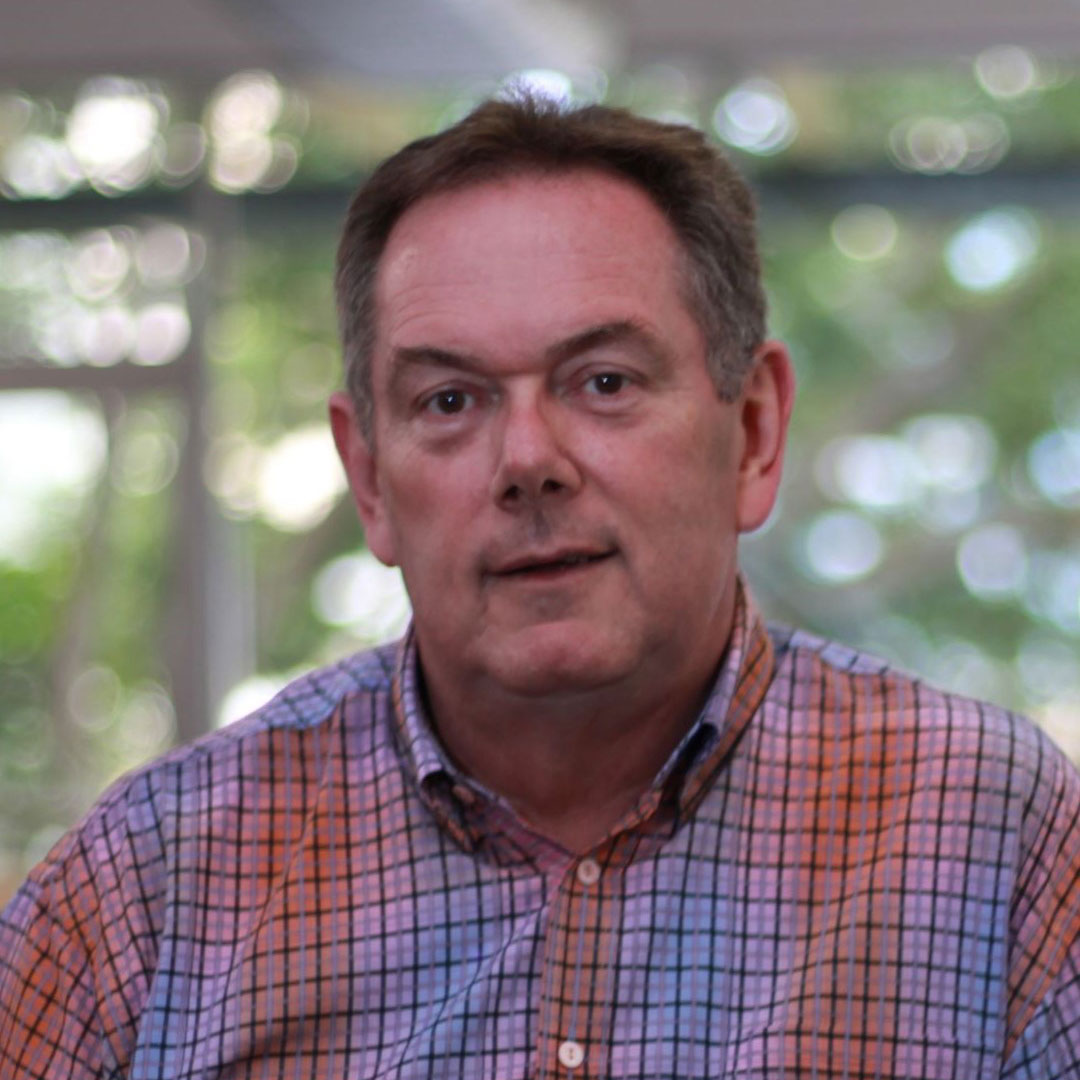
Robert Wesener
Robert Wesener has made a significant contribution on behalf of architects and the profession, into the public realm, over a period of more than 30 years. Robert’s extensive contribution includes his work with the Australian Institute of Architects, The Board of Architects Queensland, The Association of Consulting Architects, his leadership roles and donated time for community organizations and his work as a director and mentor in practice.
Examples of Robert’s donated time and leadership roles as an exemplar for architects’ contribution in the community include Robert’s Presidency of the ACA, his work within the Institute including long term roles on the Practice Committee, as an examiner and more recently as a Board member for the Board of Architects Queensland, his directorship of the Rotary Foundation (2012-14), his presidency of both the Mt Gravatt and the Tweed Heads South, Rotary Clubs, as Commissioner for Baseball Queensland, as the Director of the Tweed Economic Development Corporation and for his roles for various Schools, The Tweed Futures Committee, multiple sporting clubs and associations, and as a member of numerous associated professional bodies.
Robert also provided leadership as a director of Fulton Trotter, as a mentor within practice, and as the nominated architect for significant regional projects in the health and education sectors. Robert is a worthy recipient of the Institute’s highest honour class for members, for his long-held commitment to the advancement of the profession and notable contribution via public service.
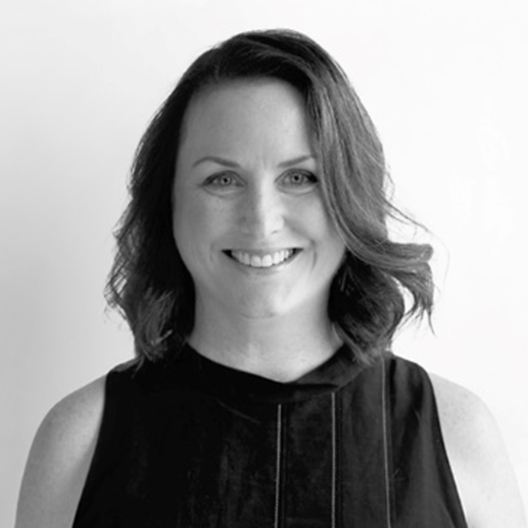
Rebecca Moore
Rebecca Moore is a highly experienced architect with recognised leadership in the design of complex health facilities alongside expertise in a broad range of building typologies. Together with these extensive abilities Rebecca has also made significant contributions to the profession well beyond her important roles within practice.
Acknowledged for her architectural design and management skills, Rebecca was appointed director to the board of Conrad Gargett (now Architectus Conrad Gargett) in 2003. Leading teams, mentoring emerging architects and delivering some of Australia’s most significant Hospital and other Institutional projects, Rebecca has had a positive influence in the urban environment across many campuses from Universities and Schools to Health and Aged Care.
Rebecca has consistently championed the advancement of women in architecture both within practice but also in the broader construction industry with her involvement in the National Association of Women in Construction (NAWIC) which led to her appointment as Juror in their Crystal Vision Awards in 2016. She has also served as a juror in the area of Education and Planning for Learning Environments Australia, 2017 to 2021 and in assessment of applicants for the prestigious Dunbar Fellowship 2017 and 2019. Her involvement and commitment to the Institute has been both extensive and consistent serving on Chapter Council from 2014 to 2017 and as a regional Juror on six separate occasions between 2009 and 2018.
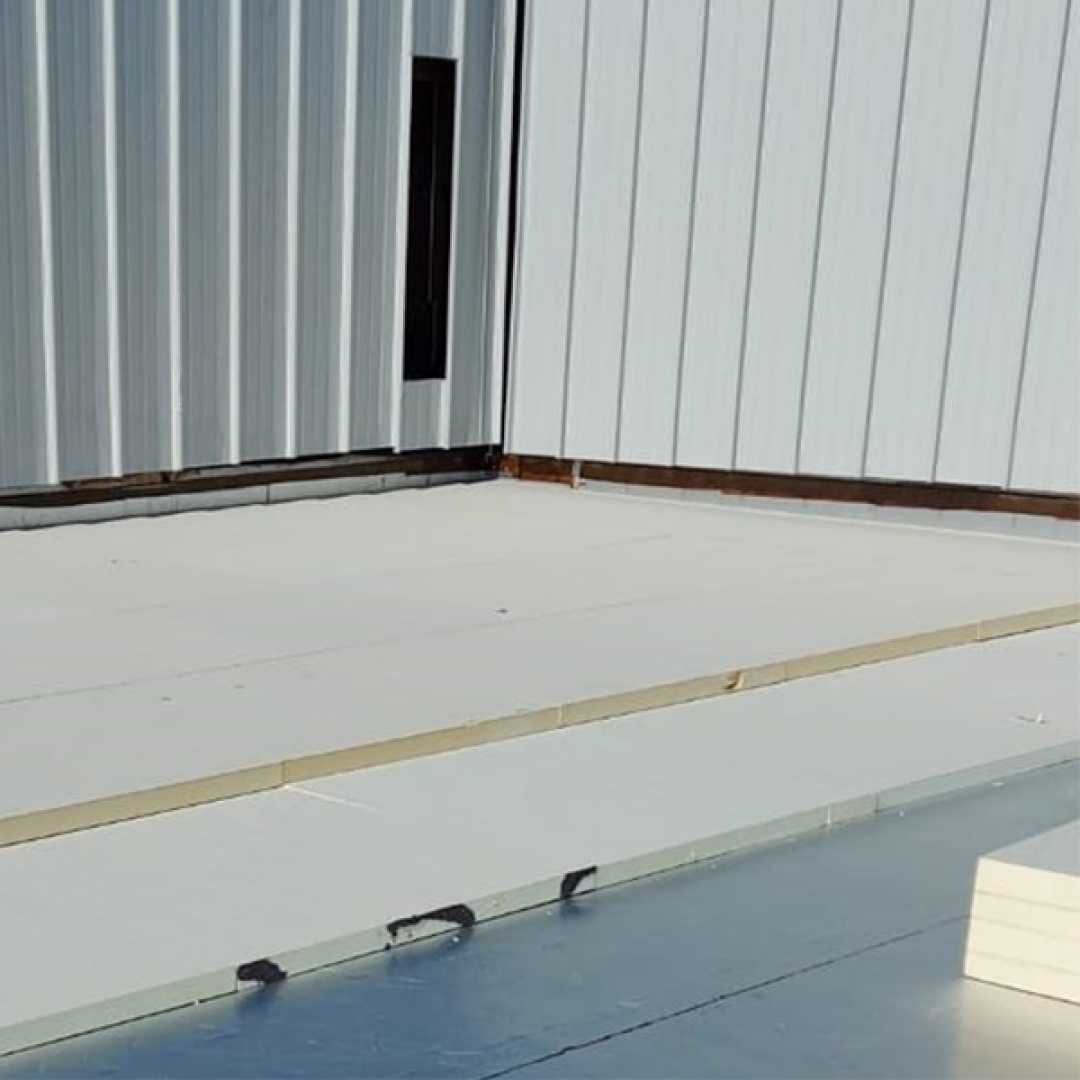
LIST OF QLD FELLOWS & LIFE FELLOWS
LIST OF Queensland FELLOWS & LIFE FELLOWS
A list Queensland based Life Fellows*
*Lists may be incomplete due to missing records
2023 Life Fellows
Eloise Atkinson is an exemplar for architects dedicated to both action and advocacy. From her Churchill Fellowship research into “innovative design, construction methods, materials and tenure for affordable housing”, her National Housing Conference papers, her longstanding work on Boards including the Brisbane Housing Company, and her involvement with foundations such as the Sharing with Friends Foundation (dedicated to housing at risk older women), Eloise has spent her professional life building specific knowledge and skills, dedicated vast amounts of donated time, and advocated for decades to government, to ensure better outcomes in the area of public and affordable housing.
In addition to her Churchill Fellowship, Eloise’s research contributions also include inputs to the Department of Communities Multi-residential Guidelines, Boarding House Guidelines for the Brisbane Housing Company, and Affordable Housing Guidelines for the Department of Housing. As an extension of her research, Eloise’s design work has been awarded by the Australian Institute of Architects and the National Association of Women in Construction.
Eloise has also dedicated time to the Institute via committee roles and as the Queensland Awards Chair, Deputy Chair, and the Brisbane Regional Awards convenor. In academia Eloise has been a tutor, research supervisor, and lecturer.
Collectively the Deicke Richards directors have provided leadership in the development of consultation for community-based work. The firm’s “Enquiry by Design” process, in place now for more than two decades, has created a formal link in the management process of projects, actively engaging the public and project stakeholders, capturing their input and giving projects back to their communities.
John Deicke has made a long and significant contribution to architecture in Queensland. Following registration in 1985, John worked extensively in Asia and Europe developing deep skills and advancing methodologies for an array of building types including health care, housing, and airports. With Peter Richards he founded Deicke Richards Architects in 1994, a practice which since inception advanced design to achieve social impact.
Deicke’s approach and commitment to architectural design made him pivotal in the evolution of a humane, socially committed and climatically conscious era of architecture in Queensland. His career exhibited an indefatigable dedication to the architectural profession and generously nurtured a generation of architects who pursue the same ambition of architecture being a community right and a driver for the betterment of lives. Deicke has the exceptionally rare ability to lead from the middle, away from the limelight, whilst selflessly fostering and advancing young talent around him. Deicke was instrumental in the AIA Paula Whitman Award for Gender Equity as a legacy honouring his wife for her pioneering research in the field.
Collectively the Deicke Richards directors have provided leadership in the development of consultation for community-based work. The firm’s “Enquiry by Design” process, in place now for more than two decades, has created a formal link in the management process of projects actively engaging the public and project stakeholders, capturing their input and giving projects back to their communities.
John Deicke is a worthy recipient of Life Fellowship of the Royal Australian Institute of Architects.
Peter Richards has made a long and significant contribution to architecture in Queensland. His 1988 Churchill Fellowship to study housing co-operatives in Canada was formative for his architectural ideology. Founding Deicke Richards Architects with John Deicke in 1994, since inception the practice advanced design to achieve social impact.
With qualifications in urban design, Richards focussed on the rich relationship between people and place through projects of all complexities from housing and neighbourhoods to public buildings and urban precincts. An adjunct professor in the School of Design at QUT, he is passionate about the role of hand drawing in the design process and authored Design|Thinking |Drawing in 2018.
Richards’ approach and commitment to architectural design made him pivotal in the evolution of a humane, socially committed and climatically conscious era of architecture in Queensland. His career exhibited an indefatigable dedication to the architectural profession and generously nurtured a generation of architects who pursue the same ambition of architecture being a community right and a driver for the betterment of lives.
Collectively the Deicke Richards directors have provided leadership in the development of consultation for community-based work. The firm’s “Enquiry by Design” process, in place now for more than two decades, has created a formal link in the management process of projects, actively engaging the public and project stakeholders, capturing their input and giving projects back to their communities.
Peter Richards is a worthy recipient of Life Fellowship of the Royal Australian Institute of Architects.
Jim’s long, productive career as an architect and educator, based initially on degrees in Environmental Science and Architecture demonstrates a deep understanding of environmental design with an emphasis on physical, social, economic, and cultural accessibility. Jim is an acknowledged leader in these fields, both conceptually and in implementation.
Jim was a Director of Gall & Medek and later a Senior Associate in Sustainability at Architectus before establishing Gall Architects. Jim’s wide-ranging work includes sustainable design, urban design, environmental impact, and ecotourism. With Gall & Medek, he designed buildings that won major awards including the FDG Stanley, Harry Marks and Multi-residential Awards, and an Australian Award for best use of timber. Jim has contributed through teaching in design, technology, graphics and Sustainable Design and thesis supervision as Professor of Design at QUT where he continues to contribute as Adjunct Professor. He has also taught at Griffith University’s Queensland College of Art and School for Australian Environmental Studies.
Jim joined the Institute as a graduate in 1992 and was elevated as a Fellow in 2008. He is a member of the Peer Review Experts Panel for Building Codes Queensland, a member of the Queensland Environmental Law Association, an Accredited Assessor with EC3 Global, Earthcheck. He has been closely involved with the Institute and participated in International, National, Regional, and local conferences, and served on Awards juries. Jim led the Queensland Heritage Committee attempt to heritage-list John Andrews’ Australian Environmental Studies Building at Griffith University. Jim became a Queensland Chapter Councillor in 2019.)
Ron Burgess MBE has lifted the profile of architects and architecture via significant contributions to international trade, diplomacy, charitable works, service to Griffith University and service to the profession via the AIA, the Board of Architects Queensland, the Association of Consulting Architects and the Papua New Guinea Institute of Architects.
Ron’s practice profile is equally significant. He was project architect for Brisbane’s iconic AMP Place and was both project Architect and Project Manager on the highly significant PNG Parliament House. During this period Ron made important contributions to the future of the fledgling PNG nation.
His diligence, rigor, patience, and collaborative style made for successful cross-cultural negotiations with indigenous artists, artisans, builders and tradespeople and he worked closely with the Government including the Prime Minister Michael Somare, to realize this important cultural work.
Ron established Peddle Thorp in PNG, including the employment of local staff, and he sustained a permanent presence that extends to this day. Ron’s professional roles included Managing Director of Peddle Thorp and Chairman of Peddle Thorp Australia, during which time Ron oversaw expansion to Cairns, Darwin, and Jakarta. Ron was instrumental in the restructuring of the partnership into a company (1988), diversifying the practice into civic and health work, and guiding the practice through further financial restructuring (2000-2006).
Whilst Managing Director, the practice was awarded significant projects such as The State Library Redevelopment (a National Award Winner) and Circle on Cavill, Surfers Paradise. Ron Burgess is a worthy recipient of the AIA’s Life Fellowship
Over 40 years of service (1972-2011) James (Jim) Crawshaw demonstrated a selfless commitment to the profession.
This commitment is illustrated by Jim’s long association with Architectural education including teaching in academia and mentoring, his lifelong commitment to community and public service, via his direct support and contributions to the AIA, his years of service through the Queensland Board of Architects, along with his work in the design and delivery of projects which were defining of their era.
In short, Jim’s career illustrates his lifelong support for, and selfless promotion of, the profession.
Jim’s partnership with the late William Job, his own practice, and his work with both the Queensland Rail Architectural and Building Services Section and Public Works were defining of his career, whilst his work teaching at QIT/QUT over more than 17 years, his mentoring of young architects many of whom went onto become leaders in their own right, and his extensive public service including his Australia Day Achievement Award and Medallion, all speak to Jim’s service, his influence on the next generation of architects and his advocacy for the profession.
2022 Life Fellows
As a student Fred worked for the Queensland Department of Public Works where a building undertaken before graduation was the modern, one-off rather than standard plan, Moorooka State School, Block D, which is now heritage listed. After graduation he worked for extended periods with Frank Oswell & Associates and Trude & Webster, both highly regarded practices. In 1960 he commenced private practice developing from a sole practitioner to one working internationally. In 1991, when he was aged 60 his practice was acquired by Thompson Adsett with whom he worked for another five years including as Director for architecture and urban design in Indonesia which led to the opening of a Jakarta branch office in 1994. When he retired in 1995, Fred was regarded as an authority on practice and building in Indonesia by State and Federal Governments. His work ranged from feasibility studies to project management, from interiors to urban design, from regional to International, and with budgets from small to $60 million (in 1995). One of his works was an early and highly regarded, off-form, board-marked, concrete office in South Brisbane for the well-known surveyors and town planners, Pike Mirls McKnoulty, whose office it remains 50 years later. During his practice, Fred was consulted by companies including James Hardie Industries, Lysaght, and Australian Consolidated Industries to provide technical and aesthetic advice.
John joined the Institute on 1 January 1988. He has therefore been a member for 32 years. His first connection with RAIA was as SONA President in the ACT and later Secretary to the ACT Chapter. He was the Built Environment Education (BEE) Representative and was involved in several BEE initiatives and publications including the Art and Architecture of the New Parliament House. After moving to QLD in 1990, he maintained his active involvement with the Queensland Chapter. He has served on various committees including Education, Public Affairs, PALS, Practice, Heritage, Urban Design and Chapter Council. He was the go-to person for Safe Design during the period of WHS regulations implementation, and on the National WHS Working Group. John is a highly valued Senior Counsellor with current and frequently requested expertise in contracts. He is currently engaged with the National Contracts review working group. John is a frequent contributor to the Institute Open Forum discussions.
John was instrumental in the establishment of Urban Design Alliance (UDAL) Queensland as a multi-disciplinary forum for Urban Design Advocacy. John has had roles as BCC City ambassador and contributed to Queensland Association for Universal Housing Design and Australian Network for Universal Housing Design. John has been passionate about making better places and has contributed to city making through design panels, and advocacy through attendance at urban design workshops and in architecture through advocacy and participation and facilitating co-design, design critique, and design methodologies.
John is a registered Architect in Queensland, NSW, and the ACT, with over 33 years’ experience in the building industry over a broad design spectrum, ranging from planning to construction administration through post occupancy evaluation. He practices as a consulting architect in all states of Australia, Asia NZ, and Middle East. He is currently serving in a primary role as Nominated Architect for MAAP Architects of Surry Hills NSW and undertakes commissions under his long-standing practice name as Parish Clarke Architects in Queensland.
John has been honoured to have given opportunity to speak to the wider community and the profession at conferences, seminars, and workshops, or invited to collaborate with other architects and designers, in such wide areas of design, as Crime prevention through environmental design, Place making, Risks trips and falls, design for wellbeing, Design for the Aged, Safety through Design, and design for Mental Health.
Mark is a Queensland architect with a deep experience in practice and with recent roles in academia. Early in his working life, he developed a strong interest in environmentally sensitive design and became concerned about the challenges of addressing climate change from the early 2000s. Mark has extensively researched issues relating to climate change including emissions mitigation, urban climate response, bio-physical adaptation and social resilience. He has gained a depth of knowledge of the dynamics between economics, governance, energy supply, built form, urban metabolism and climate change.
Mark enjoyed a successful architectural career of more than 30 years including 8 years as Director of Architectus, a leading national practice. Several of his buildings were awarded prestigious RAIA awards. During his career, Mark completed part-time Masters degrees in Management and in Business. In 2015, he left architecture to undertake a Masters in Sustainable Urban Development at the University of Oxford, completing that degree in 2017. Mark’s recent PhD (UCL) in Development Planning examined energy justice for informal settlements in the global South with a slum in Dhaka as his case study.
Mark combines skills developed from many years at senior levels of industry with an extensive history of academic study and advanced research including at world-leading universities. His current role as Industry Fellow (Associate Professor) at the University of Queensland School of Architecture involves teaching in Design, Practice and Construction along with a continuation in research activity. In addition to Mark’s service, his contributions also include excellence in the design and delivery of projects (as evidenced by numerous awards), a lifelong focus on sustainability and issues of equity and his conference papers, lectures and research work. In addition Mark has a life long record of community service, including a charity (Fuel for Change) aimed to assist the people of Dhaka and the environment. Mark has also undertaken frequent study tours to ensure his knowledge is relevant and adaptable to different cultural settings
Adjunct Professor Paul Trotter FRAIA has served the profession with distinction. His role as an educator and mentor to both students of architecture and graduates looking to pass the Board exam and become registered architects stands out through his decades of work via his stewardship of the PAL’s course and his role as a sessional academic lecturing QUT students of Architecture. Paul’s service also includes an exemplary role as Chapter President in Queensland (2018-2020) during a challenging time for the Chapter as well as his roles on Chapter Council.
As a director and part of the family legacy of Fulton Trotter Architects’, Paul has also been a driving force in local and regional work recognized through the Institute’s Awards programme.
In addition to his leadership within the Institute, his advocacy for the profession, his mentor-ship and dedication to the next generation Paul has also contributed to Industry conferences and publications.
Paul’s long standing contribution is a testament to his commitment to the profession and the Institute.
Paul’s involvement as a Queensland Chapter Councillor (2012-2021) has been one of constant and active participation. His passion for sustainability has seen him provide leadership in that space with much of that time as Chair of the Queensland Sustainability Committee, culminating in his time on the National Sustainability Committee. Paul’s involvement includes: contributing to and coordinating the QLD Institute response to the proposed changes to the NCC in relation to Energy Efficiency, bringing the issue of natural ventilation back to the NCC/BCA for class 2 buildings (with Russell Hall), seeking to have QLD brought into line with NSW in restricting dark roofs and his personal involvement in the public initiative/annual event “Speed Date a Sustainable designer”.
Paul’s involvement is not only long standing and active, but also broad. He has contributed at the highest level to the National Awards programme, specifically through his roles on Queensland awards juries. As the only awards programme in the country that visits all projects, Paul’s time as deputy chair and chair of the Queensland State Awards jury is a commitment perhaps only second to the Chapter President. More recently Paul has been on a committee reinstating awards medals to the Queensland programme and providing input to the Bronze plaques for award winners bringing Queensland into line with NSW and Victoria amongst others.
As a director/owner of Reddog Architects Paul and his firm have contributed to the quality of the built environment and the perception of excellence that architects bring to the public realm, through numerous state awards.
Paul has also contributed to the public discourse on Architecture and sustainability through his interviews, advocacy and his contributions to articles in the public realm.
Adjunct Associate Professor Dr Rosie Kennedy is a Queensland architect and consultant on sub-tropical cities and architecture who has served the profession with vision of a more resilient future for more than two decades. Rosie has led the profession in the area of subtropical city design and architecture since bringing her practice in architecture from the UK to Queensland.
As a Partner Director, Mulder + Kennedy Architects, Rosie has been the recipient of several industry awards, for example, as a Finalist, Sustainability in Urban Development and the Built Environment Category Queensland Government Sustainable Industries Awards. She is also a Dunbar Fellow. Rosie’s passion for sustainability is further demonstrated through her academic roles as Associate Professor, Deputy Director of Design Lab, and Research Leader School of Design, Creative Industries Faculty, QUT, Director, Centre for Subtropical Design, Research Fellow Next Generation Apartment Buildings and Doctoral thesis on Dense Subtropical Sustainable: The liveable multi-storey apartment building to name only a few.
Her contribution and commitment to the profession is further demonstrated by her extensive involvement as sub-tropical expert providing guidance to Council’s throughout Queensland. For example; CIB, International Council for Research and Innovation in Building and Construction, Council for Tall Buildings and Urban Habitat (US), QUT Institute for Future Environments, QUT Centre for Emergency and Disaster Management, International Network of Tropical Architecture (iNTA), National University of Singapore, American Collegiate Schools of Architecture (ACSA), Design Advisory Panel, Brisbane City Council, Sunshine Coast Subtropical Sustainable Building Design Guidelines Sunshine Coast Council. Rosies contribution to the profession has also involved extensive contribution to the Institute, through Queensland Chapter Council , Queensland Climate and Sustainability Committee, Winston Churchill Memorial Trust Queensland Regional Selection Committee, Awards Juror for the Australian Institute of Architects, affiliated organisations.
2021 Life Fellows
Alice Hampson has made an extraordinary contribution to the profession of Architecture and in particular in her design and public service to the profession. Since being awarded the status of Fellow in 2006 she has contributed in advisory roles to the Prime Minister and Cabinet (2007-2010).
Alice is also presently a Councilor of the Queensland Heritage Council (since 2017) and is also a Board Member of Queensland Board of Urban Places since 2019. In her work, she has been the recipient of various awards including the John Herbert Memorial Award and the Gold Heritage Award by the National Trust for her contribution in a publication on Contemporary Modernism.
Alice has also contributed greatly within the support of the Australian Institute of Architects being elected as a Nationally elected National Councilor in 2019 and has held the post of National President of the Royal Australian Institute of Architects in 2020-21.
Her role as advocate for the profession is exemplary and her contribution as a member of the profession to the public service of architecture is also exemplary.
She is easily able to be considered for the highest honor Life Fellow for these reasons.
2020 Life Fellows
Amy Degenhart is a Principal of degenhartSHEDD, a multi-award-winning practice based on Queensland’s Gold Coast. She has been a member of the Institute for 30 years (since 1990) and was elevated to Fellow status in 2008 (12 years ago).
Amy’s notable contribution to the fields of design, construction, urban planning and sustainability lies in the work she has undertaken to create and realise innovative residential forms, particularly micro-lot and mixed-use housing. She is passionate about solving Australia’s housing affordability issues while at the same time ensuring community cohesion and wellbeing through thoughtful architecture and engaging urban design.
Her focus in on identifying and utilising urban infill subdivisions to make beautiful, highly liveable tiny homes. Her design practice degenhartSHEDD (co-Director is Martyn Shedd) specialises in small-lot and mixed-use architectural and urban design, with extensive experience in successfully creating vibrant communities with diverse built form.
She is a worthy recipient of an Australian Institute of Architects’ Life Fellowship.
Bruce Wolfe is an esteemed practitioner, company director, creative director, mentor and
philanthropist. His notable and sustained contribution to the profession lies in his leadershipof practice,
projects and the Institute’s Queensland Chapter from 2016-2018. He joined the Institute 32 years ago (in
1988) and was elevated to Fellow status in 1993 (27 years ago).
A stimulator of innovation and ideas, Bruce has a rare sensibility to both design elevation and the business
of architecture. He is a tireless advocate for the profession and is highly respected by academic, business, civic and creative leaders, and peers across the built environment.
Bruce Wolfe is legendarily credited with reviving (and arguably saving) one of Queensland’s oldest practices—the 125 year old firm Conrad Gargett. Under his 20-year leadership of the practice it evolved from a Brisbane-based firm of 26 to a multi-studio practice of over 150 team members across Australia, with an ever-expanding portfolio of global and award-winning projects. In terms of tangible jobs creation in the sector, this achievement is outstanding in its own right. However, he is noted also for his ongoing mentorship of student and emerging practitioners, having frequently hosted EmAGN events at Conrad Gargett. Another distinction attributed to Bruce’s leadership was the establishing of gender equity on the Conrad Gargett Board—one of the first practices in Australia to do so.
Bruce Wolfe is an outstanding nominee for an Australian Institute of Architects’ Life Fellowship.
As an architect in Gold Coast, Queensland for almost 40 years, Greg Forgan Smith has rendered a notable contribution to the advancement of the profession in design, education, practice and research. Greg does not describe himself as a ‘trumpet blower’ but through his work and deeds he is well known within the local Gold Coast architectural fraternity for his efforts in practice but with the local Gold Coast Regional Architectural committee. Greg is a man who refuses to take a backward step and stepped up to the Chairmanship of the Gold Coast / Northern Rivers division way back in 1998. He is a true champion at a time where there were no takers. He commanded this position for six or more years and made a significant contribution to the Gold Coast Architectural community. Greg has been forthright in promoting ideas, sensible and long-term policies / strategies that can make a city better. He was instrumental in developing themed awards functions in the region that were the envy of the state and VERY Gold Coast. Greg has been a very strong advocate for the profession and pushed the newly amalgamated City of the Gold Coast to create and Urban Design Advisory Panel which he subsequently chaired bringing a range of design professionals to the table. Greg has also contributed to university life through intermittent critique attendances and as a profession we are indeed fortunate to have people like him advocating so strong for the quality of our built environment.
Liam Proberts FRAIA joined the Institute on 27 February 1992. He is the Director of award-winning
architecture practice bureau^proberts. Liam is a recognised figure in Australian architecture and is making
his mark globally in architecture and urban design. Since establishing his practice in 1990, bureau^proberts
has cultivated a vibrant design culture that positions the firm at the forefront of innovative solutions for large-scale, complex development, cultural and housing projects.
Driven to engage with the growth of cities and communities, Liam is dedicated to adding value to all projects within his care. Why? Because, in Liam’s own words, “better cities make better citizens”.
Intrigued by the intersection of art and architecture, Liam is highly regarded for his multi-disciplinary expertise. A review of his portfolio attests to his own belief that cultural and commercial endeavours can co-exist and, in fact, enrich each other. Among his most notable collaborations are work with artists such
as Idris Khan, Daniel Tobin and Sandra Selig in producing works including the National Police Memorial in Canberra, the Brisbane Powerhouse Masterplan and Wahat Al Karama (by bureau^proberts and Urban Art Projects, UAP) in Saudi Arabia.
An alumnus of the Queensland University of Technology (QUT) School of Architecture, Liam enjoys mentoring new talent and is a sought-after media commentator on the built environment. His work has been widely published in architecture and design publications.
Lindy Atkin FRAIA joined the Institute in August 2003 (17 years ago). She was elevated to Fellow status in 2016 (4 years ago). Owing to her considerable energy and initiative in promoting the importance of
Australian regional practice and practitioners, she is a worthy candidate for elevation to Life Fellow.
After graduating from Architecture from the University of Queensland in 1989, Lindy studied for registration
in the UK and worked with Nicholas Grimshaw, Future Systems (now Amanda Levete Architects) and Richard Rogers in London. Returning to settle on Queensland’s Sunshine Coast in 1995, Lindy worked with John Mainwaring, Lindsay and Kerry Clare, Gabriel Poole and James Grose. She also worked with Bligh Voller Neild in 1997 before establishing her own practice—Bark Architects—on the Sunshine Coast with partner Stephen Guthrie.
Under Lindy’s and Stephen’s direction, Bark has achieved a national and international reputation for producing innovative responses to place with built forms that are function, cost-effective, sustainable and beautiful. During the twenty years as a Director of Bark, Lindy has been focused on the creation and continual professional development of a design focused award winning and well regarded ‘regional’
Australian architectural practice. Bark’s projects, across the private and public sectors, have won numerous architectural, construction and planning awards and commendations. Lindy has been awarded for contributions to business development on the Sunshine Coast, winning the Sunshine Coast Corporate Business Woman of the Year in 2010.
Mark Trotter joined the Institute on 1 January 1983 immediately following his registration. He started attending the Gold Coast region’s member lunches in 1983 and was at the first Gold Coast Region Awards presentation events in 1983 and 1984. His first award acheivement was for the Mackley House in 1991. Later in that year he nominated for and was appointed as Gold Coast region chair. He was also elected to Chapter Council, the first time that a regional chair had secured a place on Chapter Council. He served on the Queensland Chapter Council for eight years (until 1999). Mark was the National Conference Convenor in 1998 (the conference was held in Cairns) and a State Awards juror in 1998 and 1999. He was Chair of the Queensland Practice Committee from 1998 to 1999.
Mark Trotter was Queensland President of the Association of Consulting Architects (ACA) from 2012-14 and also on the ACA National Committee over the same period. In that time, he was responsible for building up monthly activities and site visits which stabilised membership and finances. He was also responsible for completing and implementing a national atrategic plan which has revitalised the ACA with a growing membership.
He was the inaugural Queensland Chair of the CEFPI (now Learning Environments Australasia) from 2007-09 and Australasian Chair from 2013-15. He was the Schools of Merit International Awards juror from 2015-17. During his tenure members doubled from 350 to 700 and he was instrumental in starting new chapters in the ACT and New Zealand. He also oversaw 6 highly successful annual conferences.
As an architect in Far North Queensland for almost 40 years, Roger Mainwood has rendered a notable contribution to the advancement of the profession in design, education, practice and research. Being a regional member without the immediate, local administrative support of the Australian Institute of Architects resources can be frustrating and difficult. Despite these potential setbacks, Roger has remained ‘true’ and enthusiastic about the profession over many years and is well known as a strong advocate for the far north and the AIA regional members. Roger’s career in architecture began in Adelaide, South Australia having studied in both schools and he graduated in 1986 as the most outstanding graduate in architecture in South Australia. Not long afterwards he moved to North Queensland working with Woodhead Australia to become a practice associate within six years. Roger ambitiously set up his own regional practice Total Project Group in Cairns and began his time as a business owner, advocate and active member of the AIA winning numerous architectural awards over many years. Roger has served as the Far North Regional Chair, Queensland Chapter Councillor, Awards Juror and assisted with a range of conferences including the National Conference and the recent ‘Spirit of Place’ Regional Conference all in Cairns. Roger’s contribution to the profession through the AIA has been enormous and we are lucky as an institute to have a regional member so positive and involved in the profession.
2019 Life Fellows
For over twenty-five years Paul Uhlmann has made an extensive and exceptional contribution to the profession of architecture. Paul is a highly awarded architect who has characteristically influenced and shaped the architecture of the Gold Coast Northern Rivers Region with a focus on achieving design excellence. In a region where residential architecture has a high percentage of airconditioned holiday homes and design is often discussed in terms of trends, Paul’s work has maintained a long-term focus on appropriate passive design principles, and a respect for the history of material use and form in the context of the region. Paul has done this across scales, working with clients on single family homes for long term residents, as well as multi-residential work. Paul’s residential work is documented across national and international publications. Paul’s interest in buildings which respond to specific climatic (regional) conditions has extended his influence on the international arena (most notably in Sri Lanka and Fiji) via his resort work. Paul’s meticulous approach and understanding of the regional context engendered him as a champion of architecture both locally and within Queensland.
A strong believer in maintaining the values and principles of the profession Paul has been a mentor to many students, graduates, young and emerging architects, as evidenced by his role mentoring and tutoring at both Griffith and Bond University. He is a respected and renowned for providing inspiration and selflessly fostering the talents of those around him.
Beyond his practice Paul has had a long engagement with the Institute. Paul has held various positions in the Gold Coast Chapter of the Institute both in official and unofficial capacity. He was Queensland’s first regional member to become both State Deputy Awards Director in 2014 and State Awards Director in 2015. The role in Queensland at that time required State Juror’s to physically visit all shortlisted projects across the state. As a regional member Paul’s commitment to this very demanding role required additional travel and time away from his family, over and above that required of Brisbane based members, for the two-year duration of these roles. During his tenure in that role Paul turned the spotlight on Queensland’s contemporary regional architecture and emerging practices.
Paul also has a significant record of community involvement. He has always been deeply cognisant of what best nurtures architectural design quality and communicates it to the wider public. He is highly authentic in expressing his views and has maintained impeccable integrity throughout his career. Paul is a worthy recipient of Life Fellowship of the Australian Institute of Architects for his long and passionate commitment and contribution to his consistently meritorious roles in the promotion of architecture and the profession.
Pamella Mircovich graduated from the University of Queensland in 1976.
In 1981 she co-founded the practice of Mircovich & Mircovich Architects which she still directs today.
Beyond giving direction to the practice, her core role remains that of Architect and design team leader for projects, many of which include the design and documentation of commissions for Queensland and Commonwealth government departments and other public/statutory clients.
Pamella has developed a reputation for innovative design solutions exemplified through her work with public housing, education, the arts and national security.
With a generosity of spirit, far beyond the norm, she has always found time to make valuable commitments and contributions to the profession of Architecture and to the wider community.
She has held positions on boards, reference groups, societies, committees, and has been a sitting member on many Architectural panels, from the Queensland Government Architects’ Disciplinary Panel to the Architects Accreditation Council of Australia National Visiting Panels for accreditation of University Master of Architecture courses. For 25 years Pamella has supported the Board of Architects of Queensland as an examiner.
Pamella’s professional life has always been about creating, realizing and tempering the environment in the service of the public.
With grace and unwavering integrity, Pamella has, and continues to make a notable contribution to the advancement of the profession and is a worthy recipient of Life Fellowship of the Royal Australian Institute of Architects.
Justin O’Neill formed O’Neill Architecture in 2009 following 17 years as a Founding Director of Arkhefield.
He has contributed to over $1.5B worth of projects over the last 26 years and won over sixty local, state and national awards many of these through the AIA. In his current practice, Justin works on a broad range of projects encompassing public, commercial, retail, aged-care, retirement, multi-residential and residential buildings. Urban design and master-planning figures prominently in the firm’s work-base. Justin’s work has been widely recognised by industry peers for its contribution to architecture and innovative design
Through his practice Justin maintains a meaningful research base working with University Masters programs on yearly projects, are actively creating prototypes for new buildings, and engaging in new procurement methods.
Elevated to Fellow in 2006, Justin has contributed widely to the Institute and was the jury chair of the Australian Institute of Architects Queensland State Awards in 2009.
Furthering his contribution to the profession Justin served for 10 years on the board Brisbane Powerhouse and was board chair from 2011 to 2016. His Practice maintains their relationship as Venue Partner with Brisbane Powerhouse directly supporting the WRITERS + IDEAS program. This program has a natural affinity with the aims of his practice, and he also contribute as sponsors.
Justin continues to contribute to the creation of design excellence and the elevation of the profession through the work of his practice.
Hamilton Wilson has set himself apart as an inspirational architect with a passionate commitment to architecture and the art of place making. He has been Managing Director of Wilson Architects since 1995 and is recognised nationally for his extensive research and design of educational teaching and learning spaces. He has made significant contributions to the evolution of educational design through his extensive research and influential design of learning environments. These frameworks have contributed to Universities and Schools being re-imagined for the 21st Century.
Hamilton has over many years been acutely aware of the importance of design judgement and making decisions based upon a foundation of research thinking. This commitment to design extends to his innovative approach to the adaptive re-use of existing buildings and his passionate advocacy for the seamless integration of landscape and architecture. He is constantly seeking new and innovative ways to capture the essence of place with the humanistic characteristic of architecture and its environment.
Hamilton has a strong ethos of generously sharing knowledge and continues this conversation within the sector through his many publications and participation as a presenter at seminars and conferences in Australia and overseas.
He was the 2005 AIA Queensland State Awards Director and was made an Adjunct Professor at the UQ School of Architecture in 2010. He has mentored, supported and inspired many students, staff, colleagues and clients, providing strong leadership and advocacy, and has consciously placed the advancement of architecture at the forefront of his ambitions.
Beyond the realms of architecture, Hamilton has been Vice President of Craft Queensland and finds his creative space as an artist in his own right and has held numerous art exhibitions of his oil paintings. As a fourth-generation architect and a son of a landscape architect, Hamilton has always maintained a legacy that champions architecture.
2018 Life Fellows
2016 Life Fellows
2013 Life Fellows
A list of all Queensland based Fellows*
*Lists may be incomplete due to missing records
2024 Fellows
- Andrew Noonan
- Caroline Yuen
- Chris Hall-Jordan
- George Fatseas
- Jacqueline Pearce
- John Neylan
- Kirstie Galloway
- Liza Ringdahl
- Lucy O’Driscoll
- Simon Moisey
- Stephanie Keays
- Tammy Neumann
- Tim Stewart
2023 Fellows
- Aaron Peters
- Alexandra (Ali) Farmer
- Andrew Masters
- Anna O’Gorman
- Brendan Gaffney
- Brett Hudson
- Caroline Diesner
- Gregory Addsett
- Ivano Gestaldon
- James Davidson
- Karen Ognibene
- Lea Lennon
- Luke Pendergast
- Paul Jones
- Phil Smith
- Shy Tay
2022 Fellows
- Michael Banney
- Stephen Cameron
- Matthew Casswell
- Andrew Cooksley
- Nicole Ewing
- John Flynn
- George Kassos
- Darryl Parker
- Megan Rogers
- Ray Sweeney
- Meredith (Elliot) Tooey
2021 Fellows
- Alanna Coburn
- Andrew Gildea
- Andrew Lane
- Charmaine Kai
- Christopher Gee
- Dani Martin
- Dragan Majstorovic
- Errol Loynes
- Jo Case
- Lada Bodnaruk
- Lily Chan
- Lisa Moore
- Michael Dickson
- Paul Sekava
- Peter Gardiner
- Stephen Guthrie
2020 Fellows
- Alison McDonald
- Andrew Watson
- Anika Asplund
- Brian Mahon
- Caroline Stalker
- Darren Greenaway
- Dayne Mearns
- Duncan Ross-Watt
- Fiona Gardiner
- Gianni De Clara
- Gisela Jung
- Jason Haigh
- John Neylan
- John Price
- Julie Lawrence
- Justine Ebzery
- Katerina Dracopoulos
- Lawrie Bertoldi
- Paul Butterworth
- Paul Sekava
- Peter McArdle
- Rodney Moyle
- Ryan Loveday
- Stephen Sims
- Steve Guthrie
- Tim Bennetton
- Wendy Hay
2019 Fellows
- Brian Hooper
- Chris Bligh
- Leah Lang
- Marie-Anne Ammons
2018 Fellows
- Eloise Atkinson
- Marissa Lindquist
- Michael Lavery
2017 Fellows
- Lindy Atkin
- Rosemary Kennedy
2016 Fellows
- Stuart Vokes
2013 Fellows
- Desley Campbell- Stewart
- Henry Hancock
- Fred Iezzi
- Michael Kennedy
- Diane Lund
- Anthony Madden
- Peter McCabe
- Susan Rossi
- Andris Stenders
- Lawrence Toaldo
FELLOWSHIP APPLICATION
Advancement to fellowship
Criteria for elevation
- A minimum of 12 years as a Voting Member (Chapter Councils may consider a lesser period of membership as a special case);
- Evidence of a significant contribution to the profession; and
- Recommendation and endorsement of reasons for elevation by two Voting Members. In the case of overseas members, two short references of no more than 500 words, written by Voting Members of the Institute, must also accompany the application.
Guidance notes for the applicant
Fellowship is to recognise a level of achievement within the architectural profession. Therefore it applies similarly to generalists, specialists, academics, project managers and administrators.
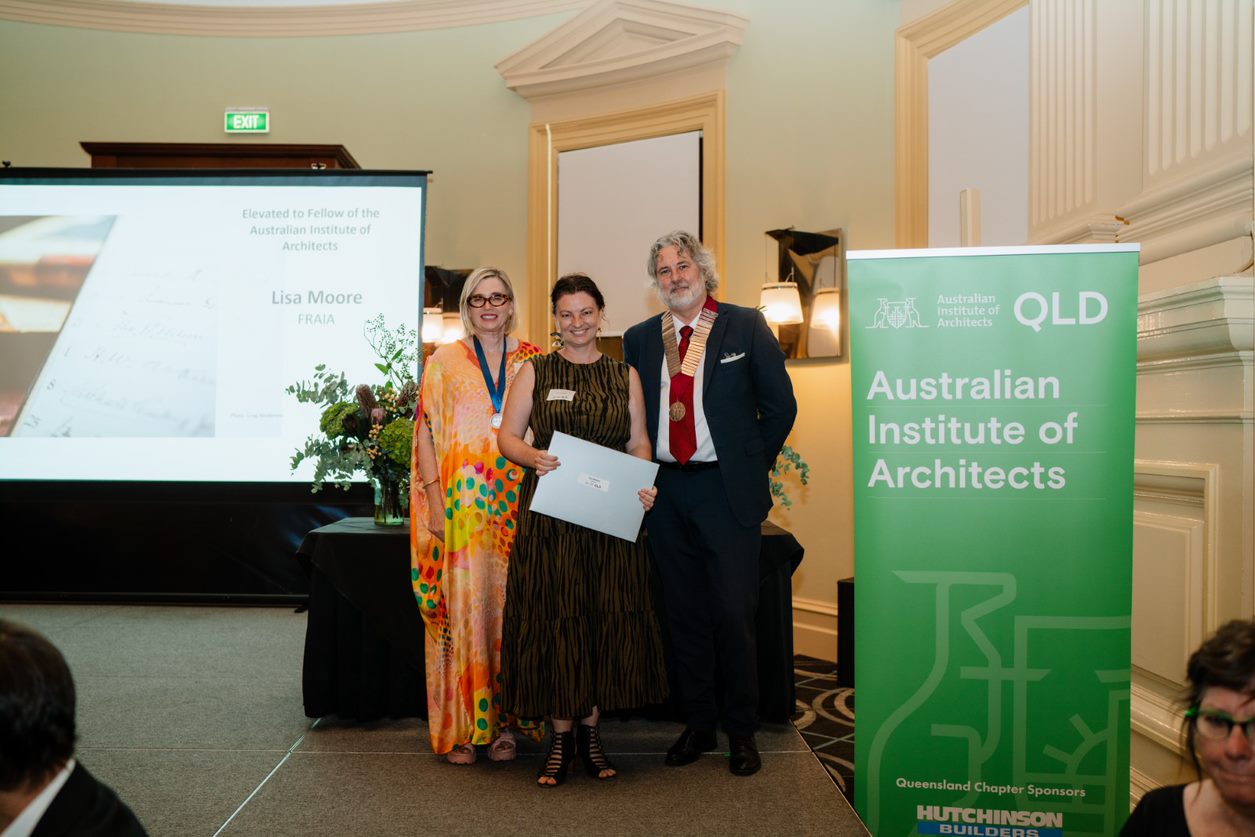
Fellowship should be regarded as a privilege, not a right.
Chapters have some latitude in their interpretation of the contribution criteria of the submission; however they should ensure that sufficient i nformation i s provided to demonstrate that the intent of Fellowship is satisfied.
To demonstrate their significant contribution to the profession candidates should provide the following supporting information:
a) Gaining of Significant Experience in the Practice of Architecture
For broad experience the candidate should supply a C.V. indicating employment, types of projects and their professional role to demonstrate their experience across the full range of architectural activity. For specialist experience, the C.V. should indicate their expertise in any area of architecture activity.
b) Significant Service to the Profession or Community
The candidate should supply details of their service to the community and profession through participation in organisations or groups such as the Institute, AACA, government, schools, community, other professional bodies, media, church etc. or through any other method. All details of service are of assistance to Chapter Council in assessing an application for elevation.
* These notes are provided for guidance only. This policy is subject to change; please refer to the current Policy Book available at your local Chapter Office.
Life Fellowship Nomination
Criteria for Elevation to Life Fellowship
Life Fellowship can be awarded to members who is a Fellow of the Institute and who, in the opinion of the National Council, has rendered notable contribution to the advancement of the profession in design, construction, literature, education, public service or in any other way deemed worthy of the honour of Life Fellowship.
“Notable contribution” is defined as being a contribution above and beyond the normal contribution made by an architect in the course of their professional career, eg. a record of long or high service in a professional or industry association; a long and sustained record of recognised excellent works or public service, or similar achievement in the fields of building technology, literature or education.
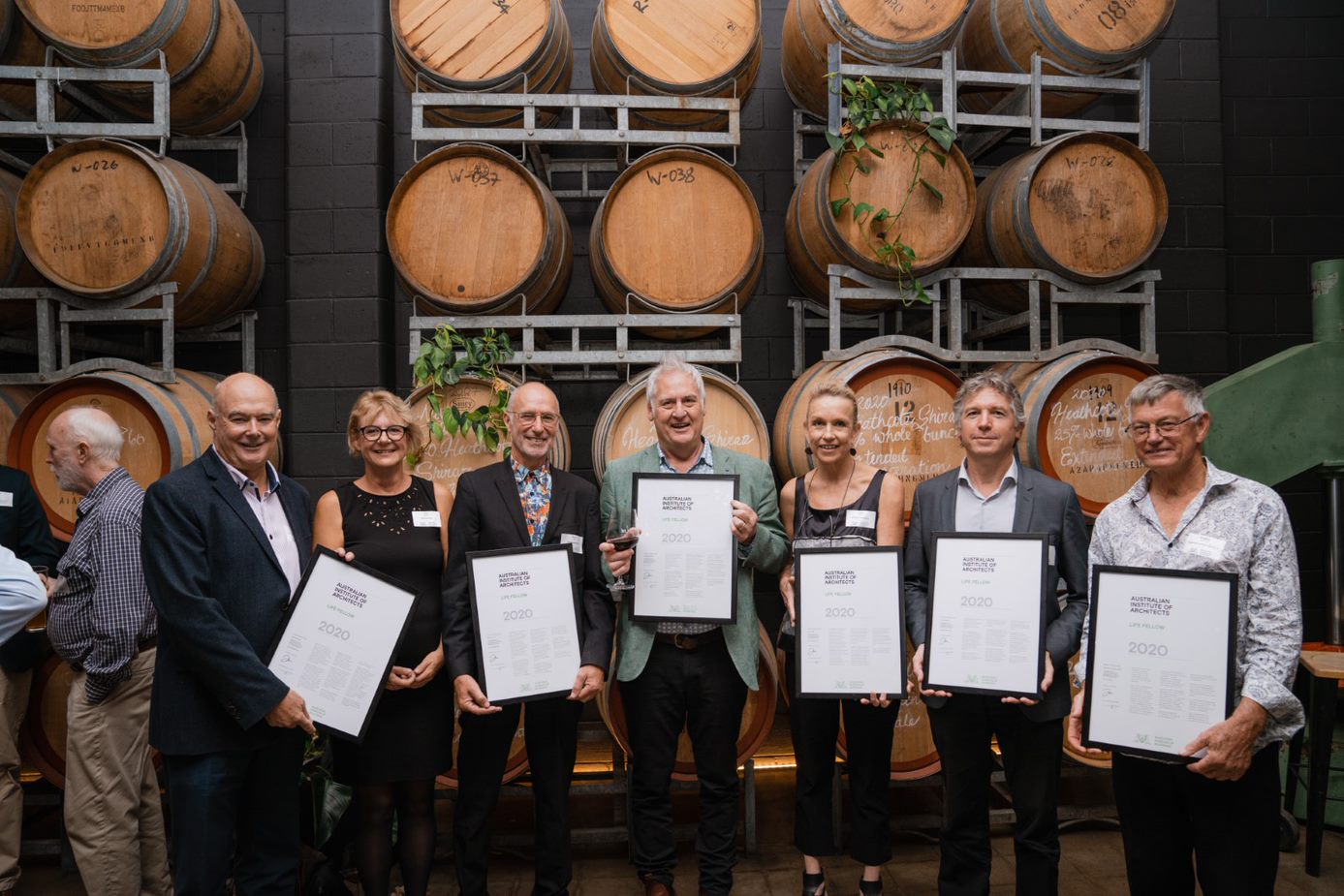
Guidance Notes for Submission of Nominations for Life Fellowship
Article 3 of the Articles of Association of the Institute reads as follows:
Article 3. Life Fellows – The National Council shall have power to confer Life Fellowship upon an architect who is a Fellow of the Institute and who in the opinion of the Council has rendered notable contribution to the advancement of the profession in design, construction, literature, education, public service or in any other way deemed worthy of the honour of Life Fellowship.
- All Corporate members of the Institute are eligible to make nominations.
- Nominations shall be in the name of a Proposer, who will be personally responsible for collating and submitting all relevant information together with a citation.
- Nominations shall be submitted to the Chapter of which the nominee is a member (or, if not a member of a Chapter, to the Secretary of the RAIA).
- Chapter Councils shall be responsible for checking that nominations are adequately prepared in accordance with these notes before onward transmission to National Council. They shall also be responsible to append their endorsement, or otherwise, of nominations, but shall not withhold from National Council any nomination on the grounds that it is not endorsed.
Contact us
Queensland Chapter
Australian Institute of Architects
2/270 Montague Road
West End, QLD, 4101
P: +61 7 3828 4100
E: qld@architecture.com.au
Office hours: 9.00am – 5.00pm
